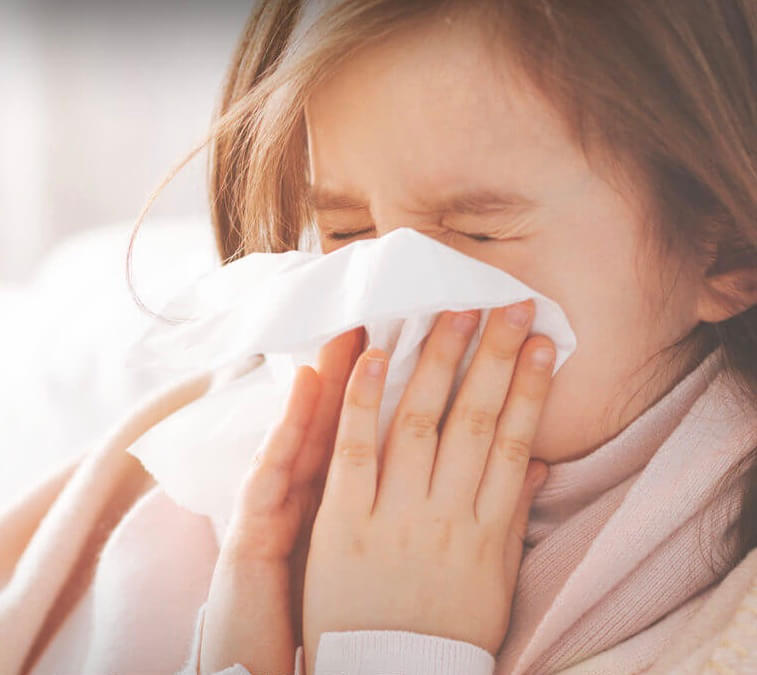Hidden Allergies and Learning
by Dianne Craft
At a recent consultation for their twelve-year-old daughter, a dad stated, “If you do nothing else for us, you will already have changed our lives.” He and his wife had followed the advice found on my CD that explained effects of hidden allergies on a child’s learning and behavior. They reported many changes in their daughter. They said she now focuses much better, finishes her work in a reasonable time, does not have daily “melt downs”, and has made tremendous growth in reading, comprehension, and writing. What phenomenon is occurring here?
Observing Struggling Learners
After homeschooling my own son, I taught for years in the public school system, teaching special education to children with moderate needs. These were bright children with learning blocks that made it hard for them to remain focused. Patterns began to emerge in these children. Among them, 99% had allergies. Although not all children with allergies have learning or focusing issues, most children with learning or focusing glitches have allergies. Unfortunately, these allergies are often unknown.
For example, when a baby is allergic to milk, common manifestations are projectile vomiting, colic, recurrent ear or upper respiratory infections, or a rash. When the parent replaces dairy for the baby, the symptoms disappear. Parents often say their child was allergic to dairy as an infant but can handle it now. Actually, it’s just that the manifestation has changed. Now the allergy is manifesting as reading reversals, melt downs, attention and focusing problems, or hyperactivity. This is a tricky connection to make, because it does not look like a typical allergy manifestation. (Cerebral Allergies by Dr. Philpott)
“If an allergy is just affecting the nervous system, it may look to the parent like a behavior, focusing, or learning problem.”
Home Solutions for Allergies
An innovative pediatrician, Dr. Mary Ann Block (www.blockcenter.com) has parents of children with behavioral problems give the child Alka Seltzer Gold (sodium and potassium) to help calm the nervous system. Why use that over-the-counter product? When a child (or adult) has an allergic reaction (manifested as anxiety, fearfulness, anger, rage, or spaciness), histamine is produced. Histamine is an acid that floods the system. Alka Seltzer Gold is an alkaline. Thus, the histamine fire is temporarily extinguished, and the child quickly feels better. In No More Ritalin, Dr. Block gives samples of handwriting before and after a child is given a suspected food allergen. Before, the child’s name is written perfectly; after, his name is written in mirror image.
Another pioneering physician, Dr. Batmanghelidj (www.watercure.com) talks about different manifestations of allergies in Your Body’s Many Cries for Water. He recommends that anyone with allergies or asthma increase their intake of sea salt and water daily (half their body weight in ounces of water, gradually achieved, and up to one-half teaspoon of sea salt). He says that asthma and allergies are manifestations of a dehydrated state in the body. The body is asking to be alkalized. Sea salt, a natural antihistamine, with its combination of natural minerals and natural sodium, comes to the rescue. In his book, Dr. “Batman.” as he is referred to, has many letters from physicians telling of their experience with this re-hydration program with their child. They find that allergy/asthma medication can many times be reduced or eliminated using this natural approach.
Dr. Nambudripad’s allergy elimination treatment done with acupressure points, called NAET, has been reported to be a solution for some parents also. (www.naet.com)
Many parents find that by increasing the child’s vitamin C (another natural anti-histamine), Essential Fatty Acids (Dr. Leo Galland, Superimmunity for Kids), water with sea salt, and reducing sugars and boxed foods, they see their child’s learning, behavior, and other allergic symptoms decrease considerably.
Hidden Allergies and Their Symptoms
Children suffering with stomachaches, dark circles under the eyes, constant sniffling, reflux, eczema, asthma, chronic bronchitis, recurrent ear infections or bed wetting, may have a hidden allergy.
Symptoms that manifest in the areas of learning and behavior are:
- Inconsistent performance (knows the material one day but not the next);
- Appears lazy and unmotivated;
- Poor memory;
- Dyslexia;
- Focusing struggles.
Behavioral manifestations can show as sensory dysfunction (noises, tags, foods, transitions bother this child), irritability, hyperactivity, or melt downs.
If an allergy is just affecting the nervous system, it may look to the parent like a behavior, focusing, or learning problem. Current allergy testing may not uncover them. The physicians mentioned above recommend a six-week allergen elimination if a child exhibits any of the above symptoms. Dr. Block warns that during this six-week trial, it is important to not even have one teaspoon of the offending food (most common allergens are dairy, eggs, peanuts and wheat). The child is suffering with a malfunctioning immune/alert system. It shouts, “Red Alert!” and sends out the same histamine when only one teaspoon is ingested as if an entire gallon was ingested. This experiment can be undertaken as a science project. For six weeks, remove the offending food and keep track on the calendar of any changes. Then put it back in, and watch what happens. (People who have kids with food allergies that result in anaphylactic reactions, hives, etc. should not reintroduce foods without medical supervision.)
God has given us wonderful solutions for many of life’s everyday, perplexing problems. As we seek Him, He will faithfully show us the way for our child.Hidd
The information in this article should not be construed as a diagnosis or medical advice. Please consult your physician for any medical condition. Dianne Craft (diannecraft.org) M.A., CNHP, is president of Child Diagnostics, Inc., in Denver, Colorado, and a Learning Specialist for HSLDA. This article first appeared in the Virginia Home Educator, Summer 2009.









